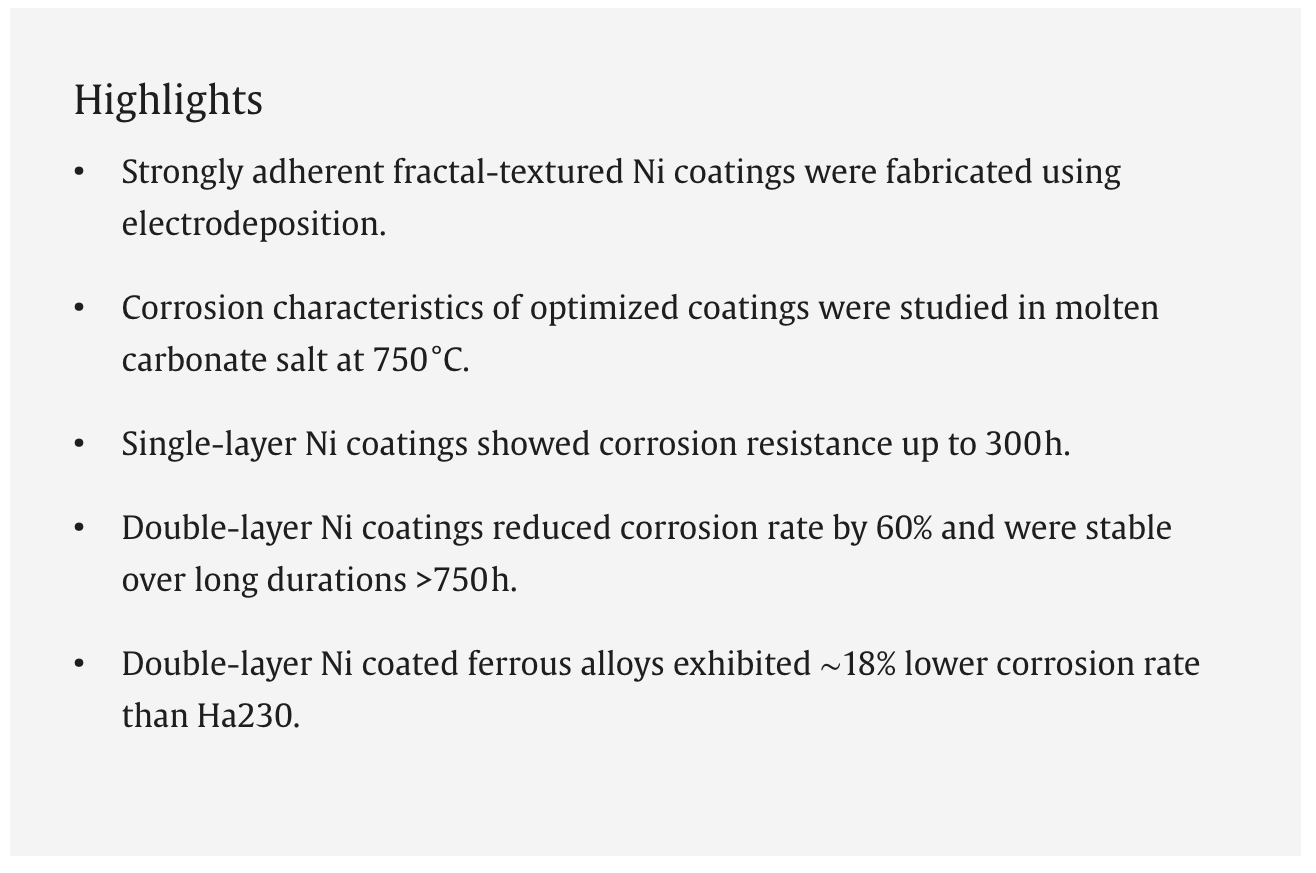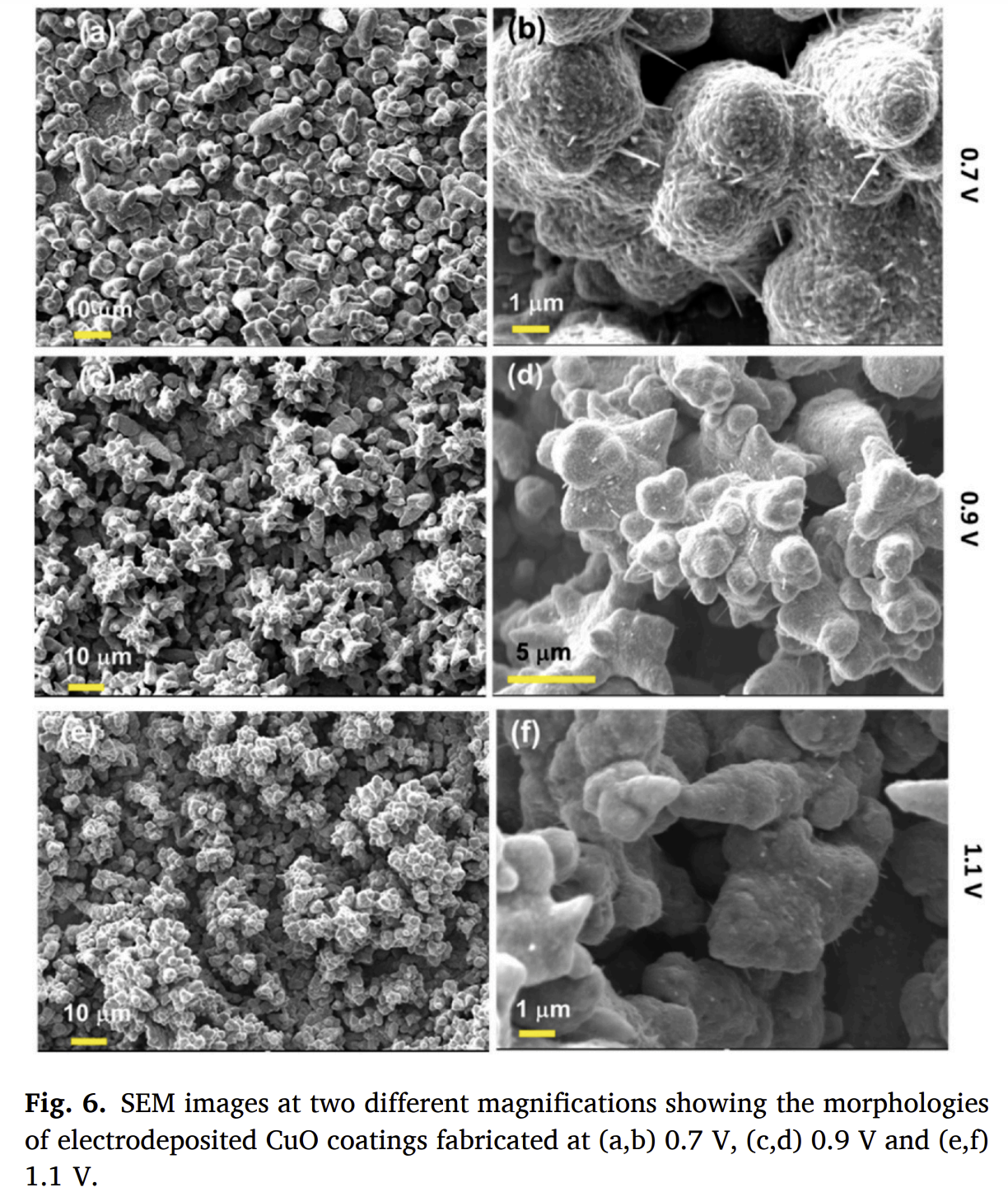Fractal steel texturing could solve the corrosive effect of higher temperature solar salts in tomorrow’s Concentrating Solar Power (CSP)

How a novel fractal steel coating prevents corrosion in Gen3 CSP, described in Novel fractal-textured solar absorber surfaces for concentrated solar power published at Elsevier: Solar Energy Materials and Solar Cells
We recently caught up with Dr. Ranga Pitchumani, who was the Chief Scientist for the SunShot Initiative, Founding Director of its Concentrating Solar Power (CSP) program, and Director of the Initiative’s Systems (Grid) Integration program at the U.S. Department of Energy (DOE). He is now back in his academic home at Virginia Tech where he is the George R. Goodson Endowed Chair Professor of Mechanical Engineering. He directs the Advanced Materials and Technologies Laboratory on a broad range of projects at the energy-materials nexus and teaches a new generation of students Sustainable Energy Solutions.
SK: Thank you for taking the time to speak with me.
RP: It is a pleasure to connect with you, Susan, after all these years.
SK: I want to know about your new paper on using fractal surfacing to reduce corrosion. But first, to understand why; this other paper you co-authored recently covers so many other attempts to solve corrosion in CSP. It must be the most comprehensive study ever. (Progress and opportunities in corrosion mitigation in heat transfer fluids for next-generation concentrating solar power 2023)
RP: Yes. That’s a very detailed review of the work to date on corrosion of alloys in molten salts, liquid metals, and supercritical CO2. It is a nice compendium of insights into corrosion mechanisms and the different approaches to mitigating it. While there are a lot of studies all around the world on taming corrosion, the paper brings them on a common platform with a view to focus future efforts on the needs of Gen3 CSP.
SK: I know you’ve published on many aspects of material science. Why is corrosion important for CSP now?
RP: One of the great things going for CSP is that it can store thermal energy. That’s a nice plus but also a challenge in terms of getting CSP to the next level, where the levelized cost of CSP needs to be lower. One of the ways to get CSP to be cost-effective is to raise the operating temperature of the plant so that you have a higher temperature supercritical CO2 or the working fluid that’s going to the power conversion system to generate electricity. DOE targets Gen3 CSP to be above 650 °C and up to 750 °C or more. With the targeted higher operating temperatures corrosion is a paramount concern in the liquid pathway for Gen3 CSP where the heat concentrated from the sun’s radiation is captured in molten salts or liquid metals as heat transfer fluids.
SK: The 6 or 7 GW of CSP out there now – are they at risk of corrosion?
RP: Oh, no. Solar salt corrosion is generally well-understood and well-contained in current (Gen2) CSP plants. The unaddressed challenge of corrosion arises when you take CSP up to higher temperatures where the viable heat transfer fluids such as chlorides, carbonates, etc., are extremely corrosive to the containment alloys. For the next generation CSP to come to fruition all the puzzle pieces need to mesh well, like high-temperature receivers, solutions for mitigating corrosion due to the heat transfer fluids, high efficiency supercritical CO2 power block, etc.
SK: So all these papers are just for next-generation CSP and heat for industry and solar thermochemistry in reactors at higher temperatures?
RP: Because that’s where the issue is and it gets more severe as you go to higher temperatures. A colloquial statement of the Arrhenius law is that as temperature increases, all hell breaks loose meaning that the corrosion rate dramatically increases. So it may seem like a small change from 565 °C, where existing plants operate, to 650 °C. That’s only 85 degrees more. But even that temperature difference greatly impacts corrosion because of the exponential nature of how the corrosion rate depends on temperature.
Fundamentally, high-temperature materials problems have been around for a long time in different applications. Gas turbines, for instance, that’s where many of the high-temperature coatings, a lot of the materials innovations came from because they encounter huge temperatures, like over 1000 °C. For CSP, with the added low-cost requirement for commercialization, the challenges are those of meeting performance and cost targets simultaneously. So it is a fertile ground where material scientists, physicists, chemists, and engineers can explore their creative ideas and develop solutions.

Fractal texturing of metal prevents corrosion in Gen3 CSP – from the paper Novel fractal-textured solar absorber surfaces for concentrated solar power
Pitchumani’s new approach – textured surfaces on the metals containing the molten salts
SK: And you describe in this paper that you have developed a completely different approach to corrosion, by resurfacing the container: Novel fractal-textured solar absorber surfaces for concentrated solar power
RP: Yes, a few years ago we’d developed highly textured multiscale surfaces that were very good at corrosion mitigation at low temperatures less than 100 °C. We have a patent application on the operating conditions at which we make the coatings and generate these textures.
Then the idea was, can we leap-frog it to address high-temperature corrosion? And that’s where our work on molten salt corrosion mitigation started.
In a recent DOE funded program, we developed coatings that are highly textured multiscale fractals, like a snowflake where if you keep zooming in you get what is called self-similar structures, that are very effective in diminishing corrosion due to molten carbonates and chlorides at 750 °C.
The beauty is that the textured coatings are made by industrially scalable processes – like electro-deposition, chemical etching, etc. – on any base alloy material. Really practical industrial solutions.
So, what we were able to show is that using these coatings, we can dramatically reduce corrosion on low-cost ferrous alloys compared to the uncoated substrates, but not only that, we can get the corrosion rates to be less than the corrosion rates of expensive high nickel content alloys like Haynes 230 that are often considered for high temperature CSP applications. The coatings are stable for long duration, and texturing the metal doesn’t create environmental or personal safety problems.
It is fantastic because now there is a viable approach for low-cost structural alloys to be corrosion-resistant to heat transfer fluids and storage media in high-temperature concentrating solar thermal applications. Our recent paper in Renewable and Sustainable Energy Reviews explains the innovation and the results in detail.
SK: But is that cheaper?
RP: Yeah. We’ve done a very detailed costing analysis to show that not only is the corrosion rate less, but it’s also cheaper. We are essentially using industrially widely used processes that are cost-effective and scalable. And the coatings reduce corrosion on low-cost alloys. So, in a molten salt heat exchanger, you can use coated low-cost iron-based alloys like stainless steel or even low nickel content alloys. For example, with coated stainless steel alloys the levelized cost of heat exchanger works out to be at least 30-40% cheaper compared to Haynes 230.
SK: Do fractal coatings have any related CSP applications?
RP: We’re also working on solar absorber coatings for high-temperature receivers where the sunlight is concentrated on the tower. That’s another DOE-funded effort that I’m proud of. We achieve very high efficiencies with our coatings, like 95%, that show very little degradation with isothermal and cyclic high temperature exposure for long periods of time. The impressive part is that while the absorptance is high, the emittance of the absorber coating is only about 0.45 or so, which leads to the high overall efficiency. The coatings are extremely durable to mechanical wear, thermal shock, and sand impact, making them highly suitable for Gen3 CSP.
SK: Emittance…?
RP: If you have a coating that absorbs sunlight well, it also tends to radiate back out well; it emits a lot of heat, so the overall capture efficiency is reduced.
The fractal textures on our absorber surface have little light-trapping caves, little cavities into which light bounces back and forth. We can tailor the texture features and their configuration to range from microns down to nanometers. This way, we can adjust the absorption of the different wavelengths of the light spectrum – more in the desirable lower wavelengths, the visible region, and less in the infrared region, the long wavelength region.
We’ve tested the coatings extensively at high temperatures; the coatings are very stable. We have impinged sand on it, dunked it in water; it’s stable. We’ve taken it out of the furnace at 750 °C and immediately quenched it in an ice-cold bath; the optical properties remain steadfast. It is really a robust solution for high temperature CSP.
SK: So these two surfacing innovations would be for higher temperature use?
RP: Yes, they will serve 650+ °C for next-generation CSP very well. Other than CSP, any solar thermal process at high temperature, like industrial heat, could benefit from these innovations. We’ve shown the stability of the coating’s performance at 750 °C. So, any mid- to low-temperature application would also be readily benefit. These are tremendously exciting innovations and I’m really proud of what our group does.
SK: What happens with something like that where you invented a completely new, improved thing at the university lab? Does somebody license it?
RP: Yeah, that’s the goal. We have filed for patents. And we’ve done a lot of diligence in terms of endurance tests in our lab and some tests at Sandia; the coating has held up well. We also plan to do industry-standard testing at NREL for additional third-party validation of the coating performance. So that’s our pathway to market. We welcome discussions with any interested party on these innovations.
SK: Are you seeing new STEM talent aware of the exciting new opportunities for solving problems as CSP evolves to even higher temperature applications like solar thermochemistry?
RP: They’re certainly a lot more knowledgeable and a lot more conscious of sustainability in general than several years ago. They’ve grown up seeing or riding in Teslas, seeing solar panels on their rooftops or in their neighborhood. There is a lot more awareness and discussion in the media about climate change and renewables. So it’s not surprising that they know and care about these issues. It’s all around them.
But you don’t want to train somebody for just CSP, or just PV, or just batteries. What I want to see is a general interest in solving societal problems through sound science and engineering.
So you want fantastic engineers, fantastic material scientists, fantastic physicists and chemists who work in concert to solve problems for CSP. My course on Sustainable Energy Solutions is taken by not just one discipline. I get students from engineering, business, physical sciences, architecture, and so forth. My role is to expose them to the problems in the energy/sustainability landscape from a techno/economic/policy perspective and stimulate their passion. To graduate them with the confidence and the purpose that they’ll be the architects of the solution to this problem that we’ve got ourselves into.
More Reading:
Novel textured surfaces for superior corrosion mitigation in molten carbonate salts for concentrating solar power Kondaiah, P., & Pitchumani, R. (2022). Novel textured surfaces for superior corrosion mitigation in molten carbonate salts for concentrating solar power. Renewable and Sustainable Energy Reviews, 170, 112961. https://doi.org/10.1016/j.rser.2022.112961
Progress and opportunities in corrosion mitigation in heat transfer fluids for next-generation concentrating solar power Kondaiah, P., & Pitchumani, R. (2023). Progress and opportunities in corrosion mitigation in heat transfer fluids for next-generation concentrating solar power. Renewable Energy, 205, 956-991. https://doi.org/10.1016/j.renene.2023.01.044














































